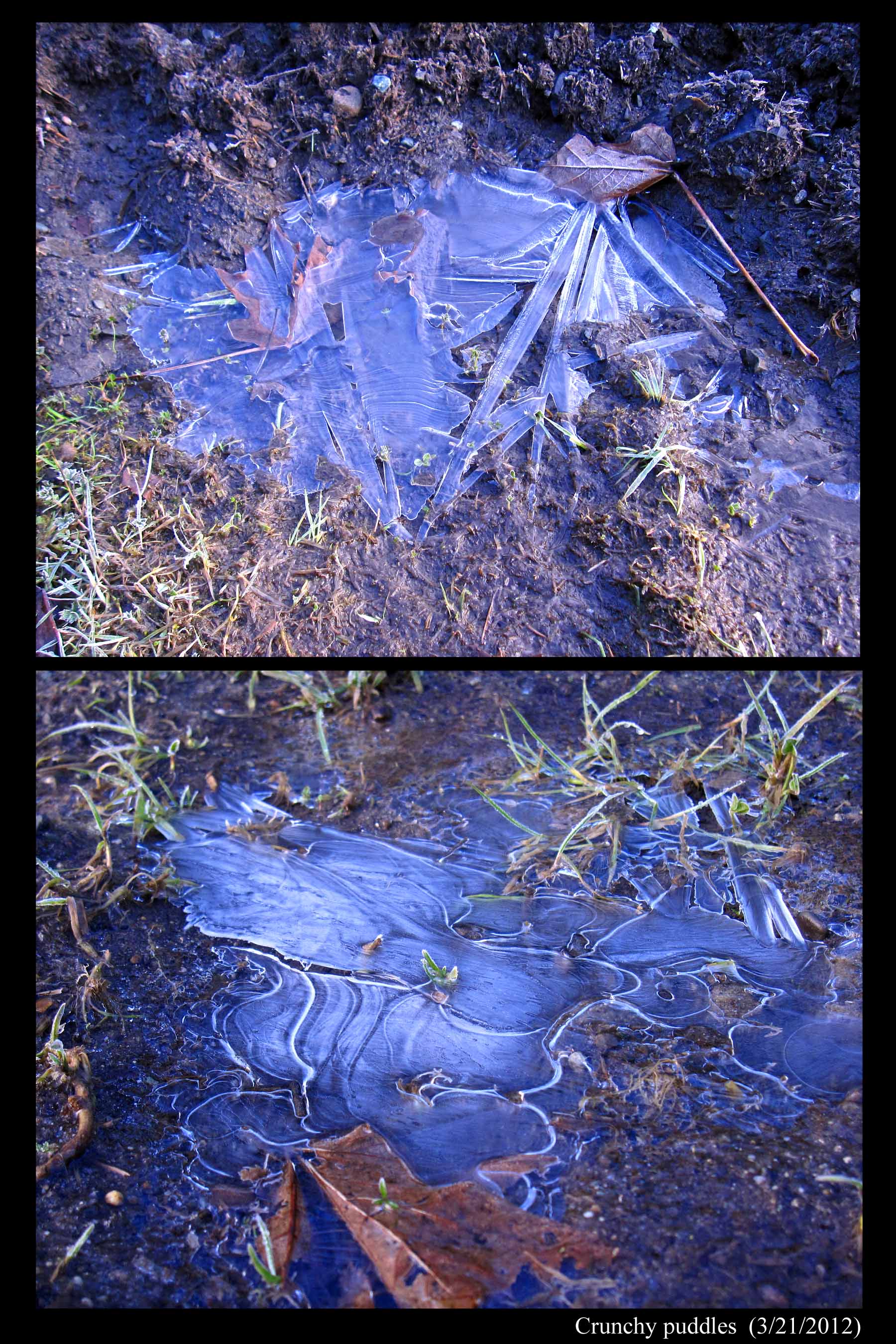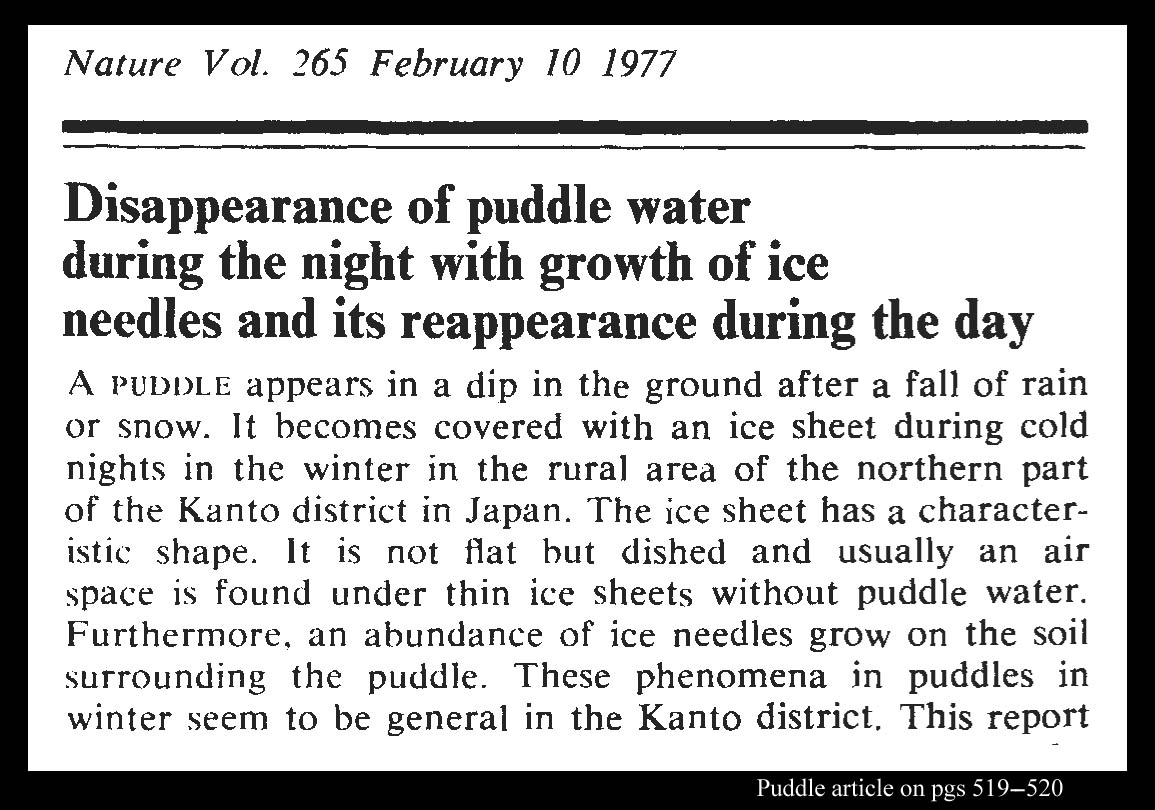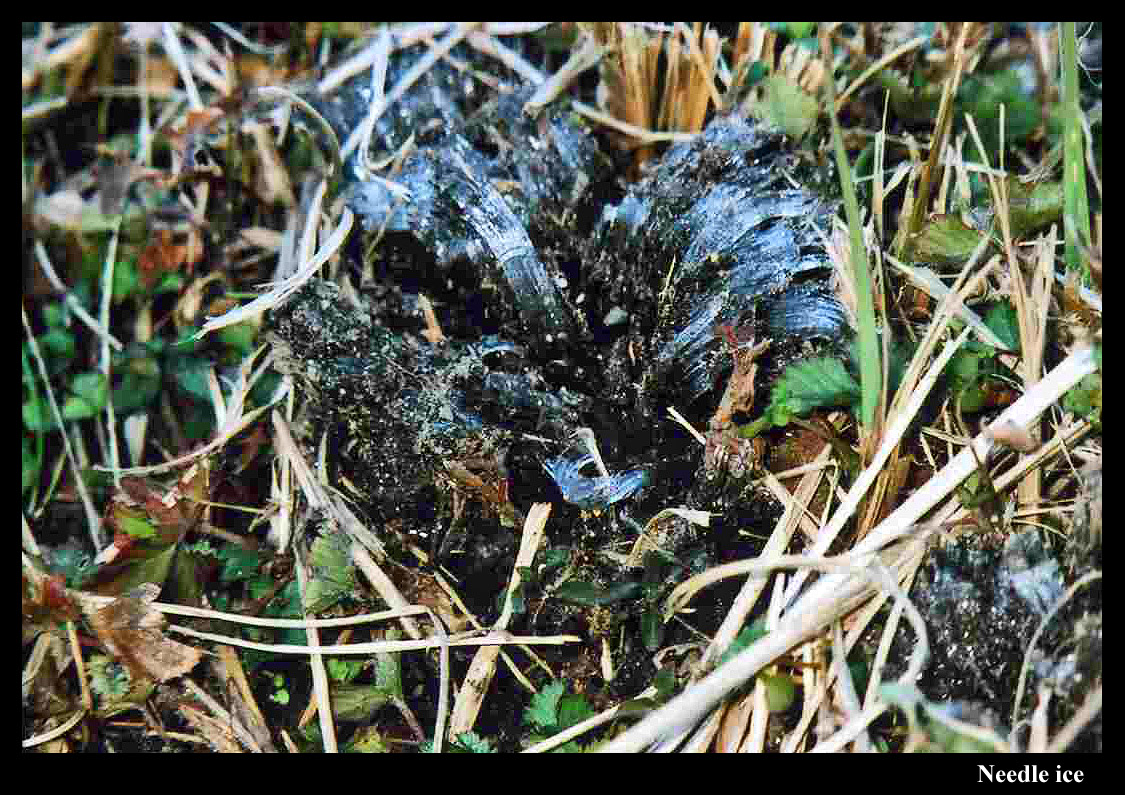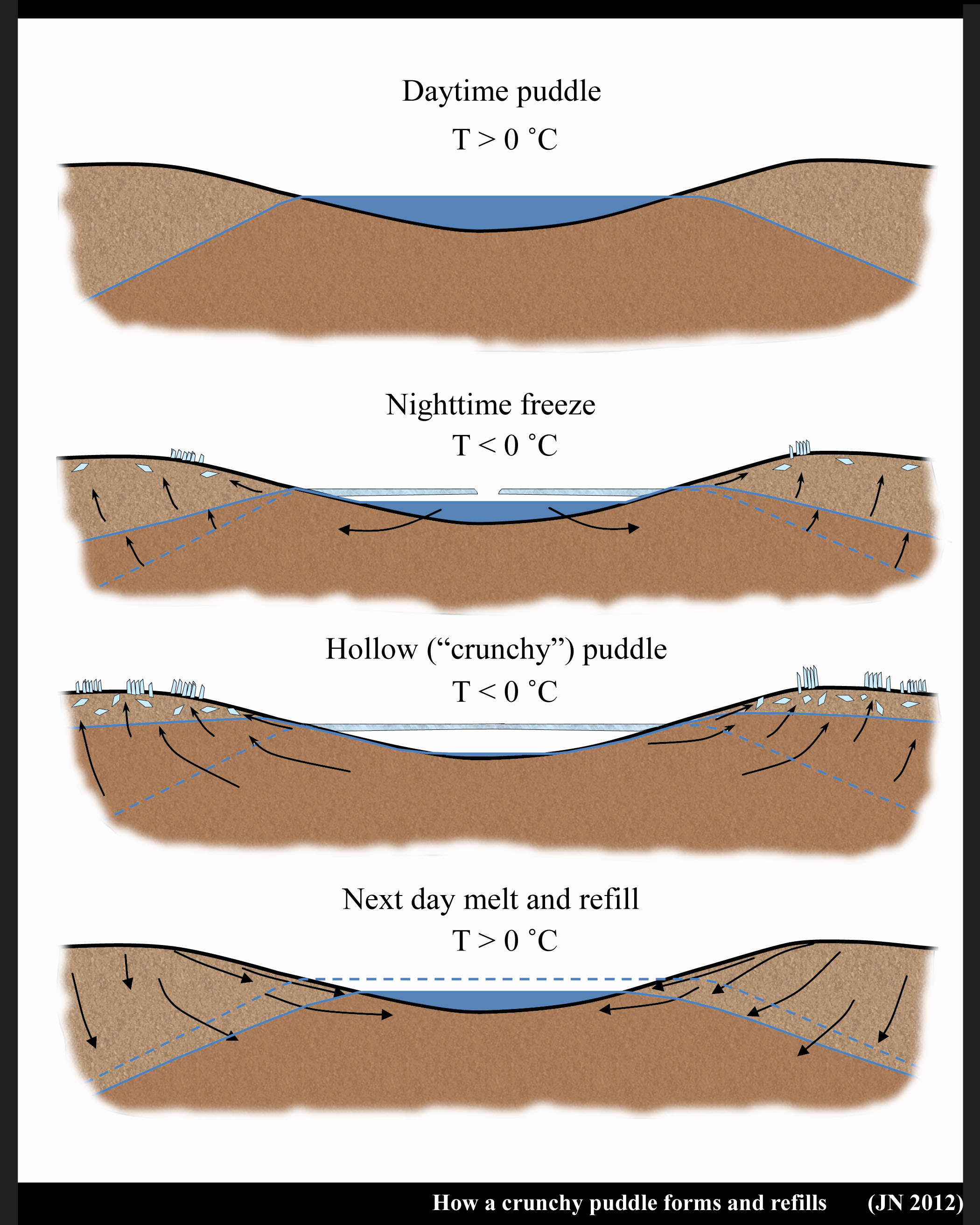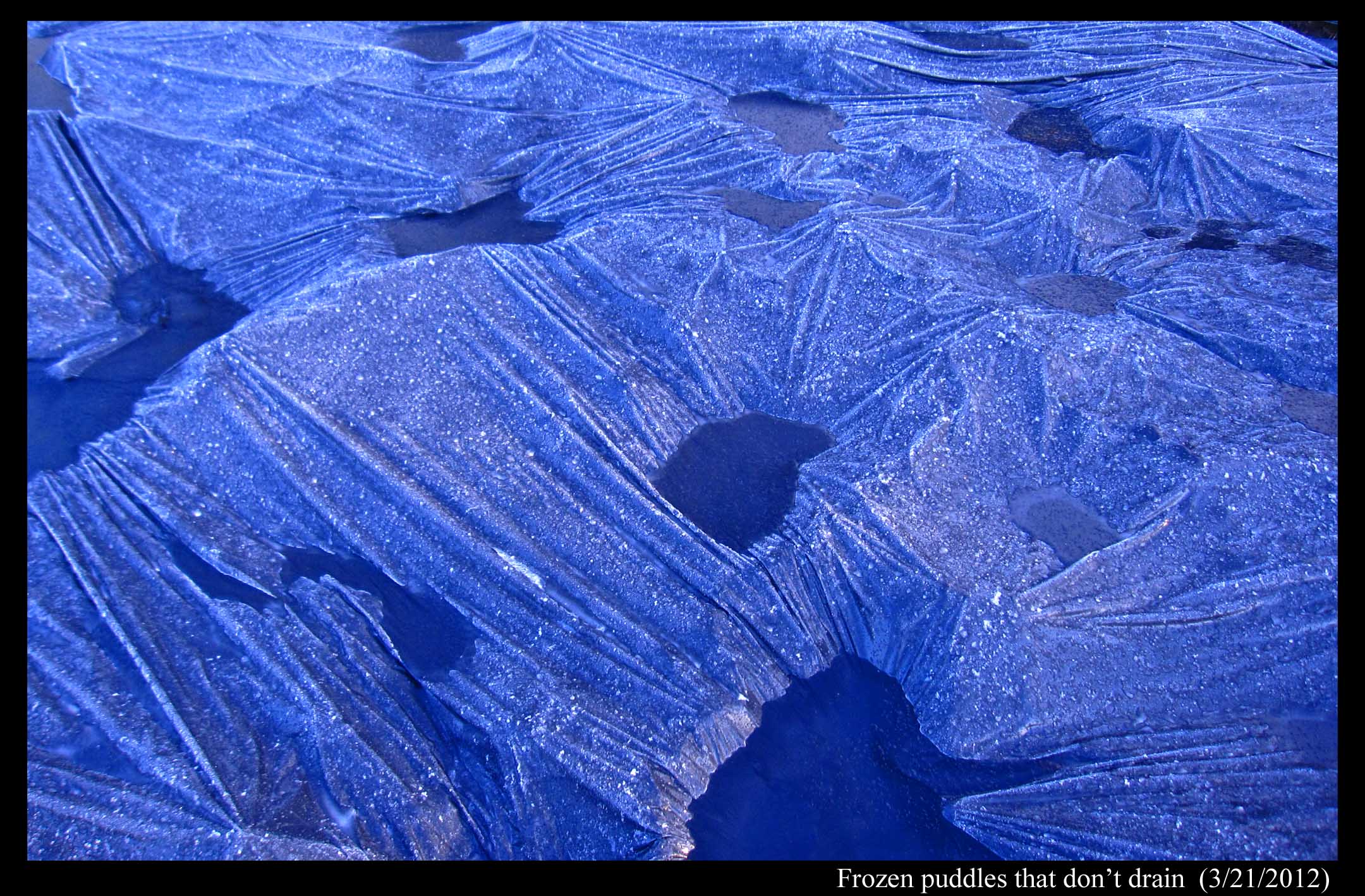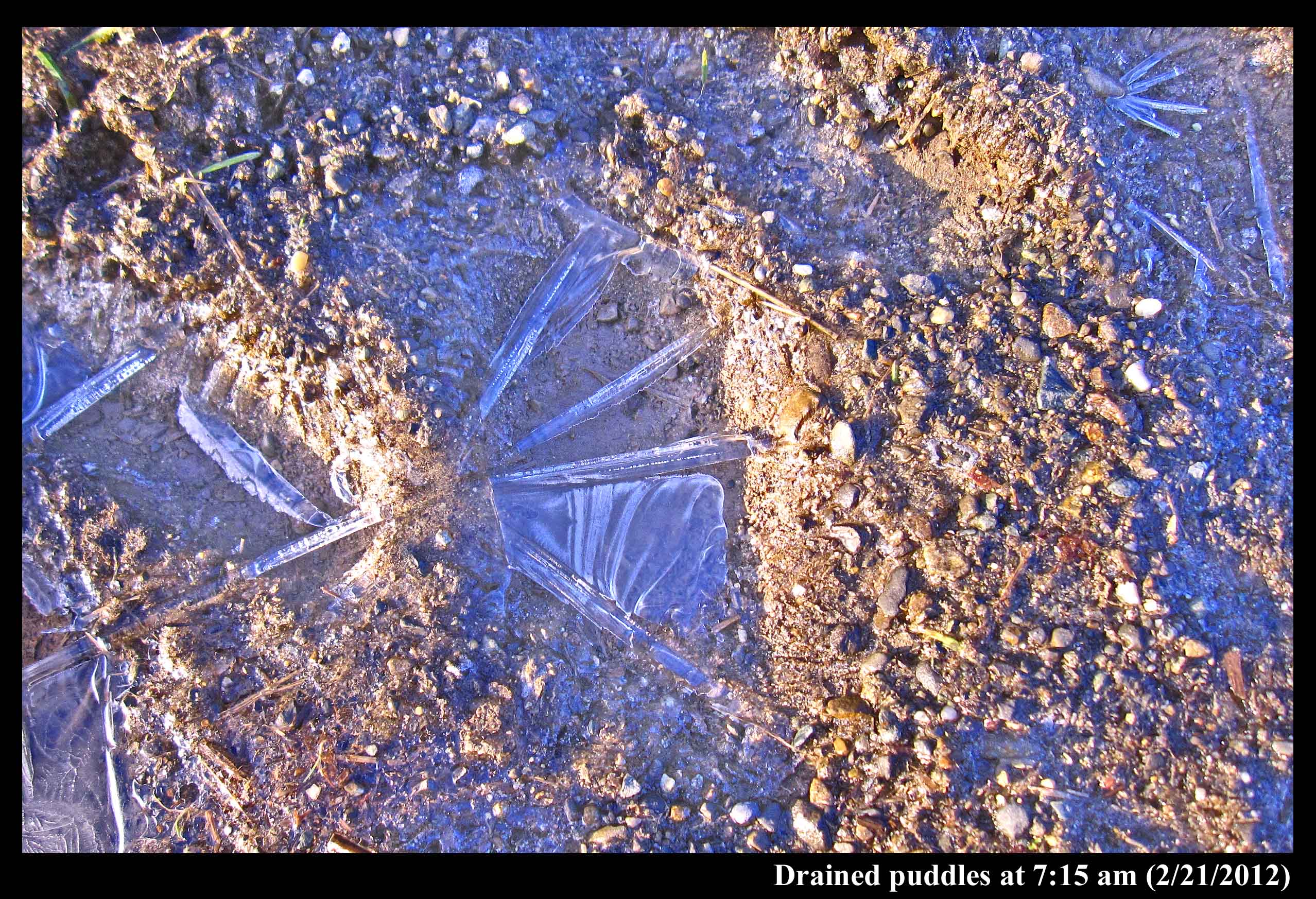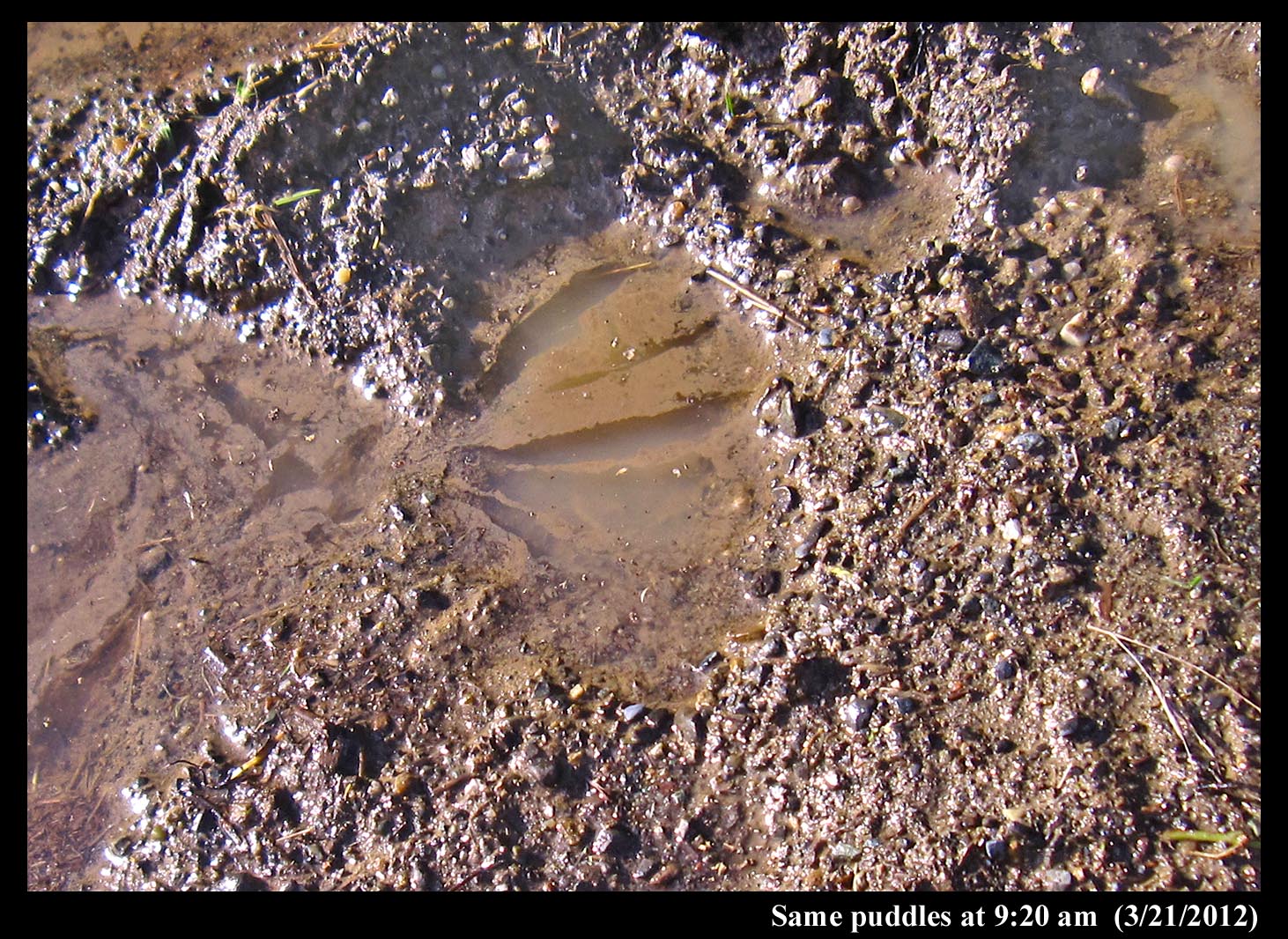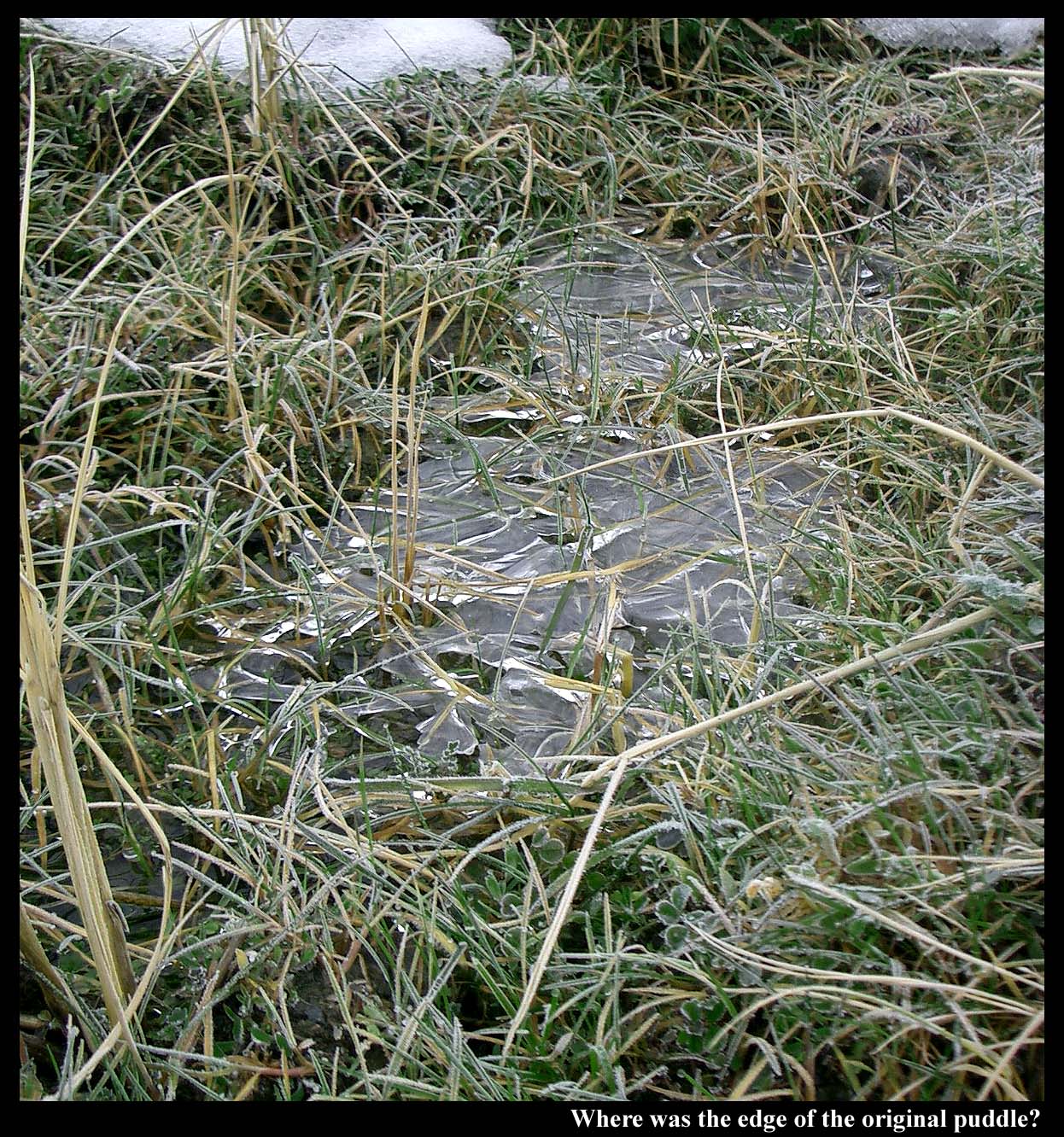| « Trip of the Ice Man | Black Ice » |
The Crunchy Puddle Puzzle
Who cares about crunchy puddles?
As a kid, I liked to stomp on hollowed-out frozen puddles to hear their crunch. Sure, I sometimes wondered, as many kids probably do, about what happened to all the water and why it happened only to some of the puddles. But such puzzles don’t linger in the mind of a kid for long.
Years later, while living in Japan, I rediscovered frozen puddles and saw their beauty in new ways. I saw new puzzles and revisited the old one about the missing water. A fellow ice-researcher I asked thought the water simply drained. But if they drained, how could I observe puddles in the same location morning after morning? How could the water come back without rain or snow? And why would they suddenly drain just as ice was forming? Something funny seemed to be happening. Searching the scientific literature, I found out that Kenichi Satake, also in Japan, had puzzled over the same thing. But he also offered a solution. His solution was published in Nature in 1977:
What he noticed was that a) the puddle water did reappear day after day, just as I thought, and b) their disappearance coincided with the formation of needle ice.
He pointed out that the freezing of the puddle coincides with the freezing of the top surface of the ground. When the ground freezes and ice needles form, water flows up to the base of the ice needles and push the needles up. That’s why they grow as columns. But the ground water must come from somewhere, and if a puddle is nearby, water will flow out of the puddle, through the ground, and deposit on the base of the ice needle. Even if the water must flow uphill.
I reproduce his sketch below.
In the sketch above, the puddle has water, but so does the ground, particularly below and near the puddle. When the ice crystals start forming on and in the nearby ground, the water flows to the ice as the ice sucks up water. Where and if this water flows will depend on the soil and layers in the soil; perhaps much of it could be just below the surface. This sucking up of the water could be more horizontal than vertical - it just depends on the surroundings. Later, when the ground ice melts, the water flows back, perhaps much of it on the surface.
One thing I’ve noticed though is that the ice needles aren’t needed. All that has to happen is for the top surface of the ground to freeze and for the water to be able to flow out the sides of the puddle. Hollow puddles don’t form when the bottom surface is sealed:
My first attempt at reproducing Kenichi’s observation ended prematurely when a car drove over my puddle. But I did better the second time. Here’s the puddle I chose. (Not knowing we’d get a freeze, I didn’t photograph it before freezing.)
Notice that the puddle is completely drained, but no needles exist anywhere near the puddle. Still, the surrounding ground is frozen. So, I went back a few hours later and found the water level had returned.
In fact, the water level appears to be above the level of the original glaze. This makes sense as the ground probably freezes first because it will cool faster than a relatively deep patch of water. So, the ground can start drawing water from the puddle even before it starts to freeze. Maybe that could be my contribution to our knowledge of frozen puddles. I doubt though that Nature would still accept a paper about puddles. They seemed to have moved away from the simple observations of nature.
Still, one can have lots of fun trying to puzzle over why this or that feature of a glazed puddle formed.
Or even how the ice could have gotten there in the first place.
– Jon
2 comments
Thank you for answering this puzzle for me! As a kid, I too loved breaking the hollow ice on puddles and always wondered how they formed that way.
01/09/18 @ 13:49

Nice to hear, David.
I suppose many have wondered, but only for a minute.
The frozen puddles have other interesting features, and thus more things yet to wonder about. It never ends.
About that last question and mystery in the last photo, I think I now have the solution.
01/23/18 @ 16:04
